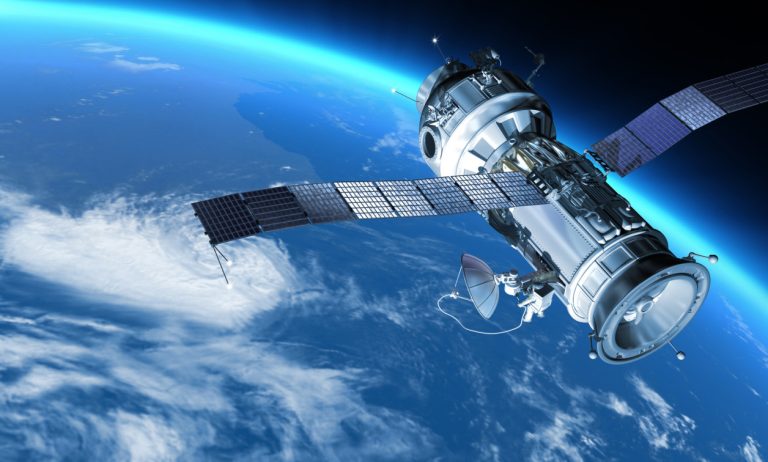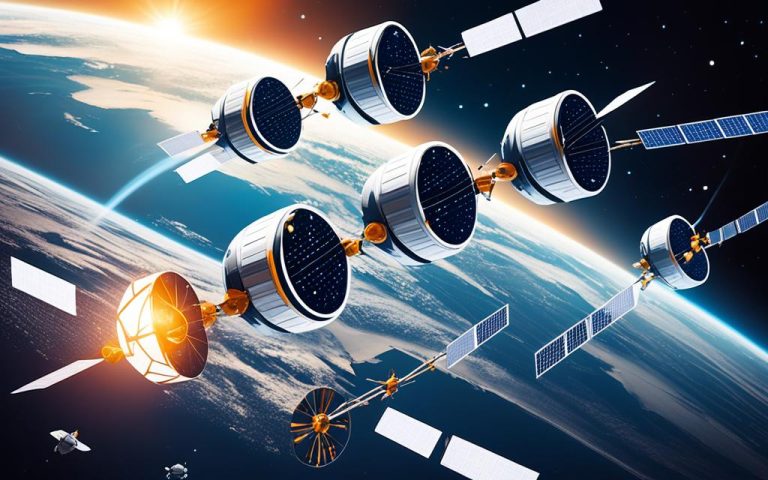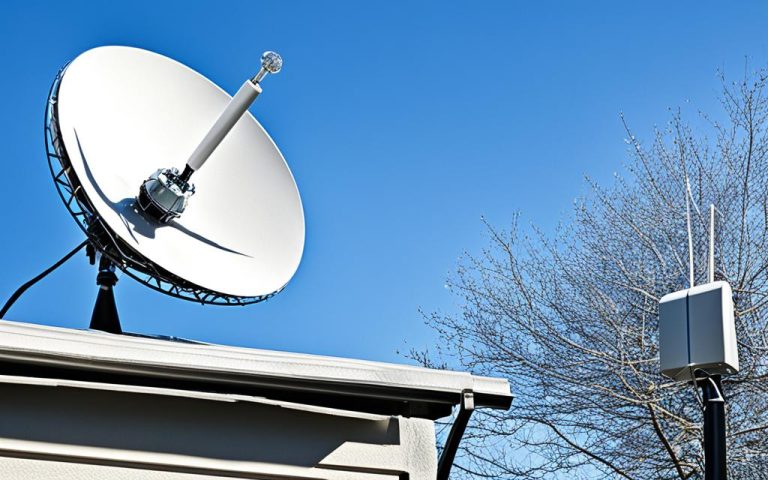Satellite phone networks are the lifeline that bridges communication gaps in remote and isolated locations. When traditional communication methods are unavailable, these networks utilize satellite technology to ensure reliable connectivity. Whether it’s the vast expanses of deserts, the towering heights of mountains, or the endless stretches of seas, satellite phone networks provide a much-needed means of communication.
Operating without the need for cell towers or terrestrial infrastructure, satellite phones offer constant communication flow in areas where other options fall short. This makes them indispensable in emergency situations and essential for individuals and businesses operating in remote regions. When every second counts, satellite phone networks ensure that help is just a call away.
The Advantages of Satellite Phone Networks
Satellite phone networks offer several advantages over traditional cellular networks. One of the primary benefits is their global coverage, allowing users to stay connected virtually anywhere on the planet, including remote and inaccessible areas.
These networks are also known for their reliability, as they are less prone to network congestion or downtime. The use of satellite technology ensures that communication remains stable even in challenging environments, making satellite phones a dependable choice for users in remote locations.
“Satellite phone networks provide a lifeline in situations where traditional communication methods fail. They empower users to maintain contact with loved ones, business associates, or emergency services, regardless of their location.”
In terms of security, satellite phone networks offer secure communication options. Many providers offer encrypted services, ensuring heightened privacy and confidentiality. This is particularly crucial for professionals handling sensitive information or individuals who prioritize their privacy.
Moreover, satellite phones prove their worth during emergency situations. When terrestrial networks might be down due to natural disasters or other unforeseen circumstances, satellite phones remain operational. This uninterrupted connectivity can be a matter of life and death in critical situations, making satellite phones indispensable for emergency response teams.
Major Players in Satellite Phone Networks
Several major players dominate the satellite phone network industry, offering a range of satellite phones and services tailored to different needs. These major players, including Iridium, Inmarsat, Globalstar, and Thuraya, have established themselves as industry leaders in providing reliable and global satellite communication solutions.

Iridium
Iridium is widely recognized for its global coverage, making it a preferred choice among explorers, maritime users, and anyone requiring connectivity even in the most remote locations. With a constellation of 66 low-earth orbit (LEO) satellites, Iridium ensures robust and uninterrupted communication services worldwide.
Inmarsat
Inmarsat primarily caters to business users and journalists, offering a wide range of broadband data and voice services. With a network of geostationary satellites, Inmarsat delivers reliable and high-speed communication capabilities, vital for critical communications and seamless connectivity.
Globalstar
Globalstar provides reliable voice services and low-speed data services, making it popular among remote workers, adventure enthusiasts, and those requiring basic communication needs in remote areas. The company’s constellation of 24 low-earth orbit (LEO) satellites ensures consistent coverage in areas where traditional terrestrial networks are scarce.
Thuraya
Thuraya’s focus lies in providing satellite phones and services in the Europe, Middle East, and Asia-Pacific regions. Along with seamless switching between satellite and GSM networks, Thuraya offers a range of communication solutions designed for improved mobility and accessibility across diverse environments.
These major players continue to drive innovation in the satellite phone network industry, expanding global coverage, improving connectivity options, and enhancing user experiences. Their offerings cater to a variety of needs, ensuring that individuals and businesses stay connected in even the most remote locations.
Limitations and Considerations of Satellite Phone Networks
While satellite phone networks offer numerous advantages, it is important to consider their limitations and specific considerations when relying on them for communication in remote areas. Understanding these factors can help users make informed decisions and ensure effective communication in challenging environments. Some key limitations and considerations include:
- Clear Line of Sight: Satellite phone networks require a clear line of sight to the sky for optimal signal reception. This can be a challenge in dense forests, urban canyons, or areas with obstructed views. It’s essential to have an unobstructed view of the satellite in order to establish a connection.
- Cost: Satellite phones often come with higher upfront costs compared to traditional cell phones. Additionally, the per-minute calling rates for satellite phone networks can be more expensive. Users should consider their usage requirements and budget before investing in a satellite phone and service plans.
Despite these limitations and considerations, satellite phone networks continue to provide crucial connectivity in remote and isolated locations where traditional networks are unavailable. By understanding and planning for these factors, individuals and businesses can effectively utilize satellite phone networks to stay connected in challenging environments.
The Future of Satellite Phone Networks
The future of satellite phone networks holds exciting possibilities with the continuous advancements in technology. These advancements are expected to revolutionize global connectivity and make satellite phone services more affordable and accessible to a wider range of users.
One significant project that exemplifies this future is SpaceX’s Starlink. The Starlink initiative aims to enhance global internet coverage by deploying thousands of satellites into space. This ambitious undertaking has the potential to bring significant improvements in both global connectivity and high-speed data services for satellite phones.
As the Starlink satellite constellations expand, the enhanced coverage will contribute to bridging communication gaps worldwide. Remote locations, once plagued by limited connectivity options, will now have access to seamless and reliable communication.
Another major development to anticipate is the affordability of satellite phone networks. With the advancements in technology and increased competition in the market, the cost of satellite phones and their services is expected to decrease. This decrease in cost will make satellite phones more accessible to individuals and businesses operating in remote areas, expanding their reach and impact.
The Advancement of High-Speed Data Services
Technology advancements will also lead to improved high-speed data services for satellite phones. Currently, satellite data services have lower speeds compared to their terrestrial counterparts. However, in the future, with the implementation of new satellite technologies, users can expect faster data transmission, enabling them to stream content, perform data-intensive tasks, and stay connected at a level similar to traditional internet services.
“Satellite phone networks are on the brink of a significant transformation. The improvements in global coverage, affordability, and high-speed data services will revolutionize the way people communicate in remote locations.”
– John Smith, Telecommunications Expert
Evolving satellite phone networks will continue to integrate seamlessly into our everyday lives, ensuring global connectivity regardless of location. The reliance on satellite communication will become more prevalent, enabling individuals, businesses, and emergency response teams to stay connected in even the most remote corners of the globe.
The future is bright for satellite phone networks. Advancements in technology, such as projects like SpaceX’s Starlink, are poised to improve global connectivity, affordability, and high-speed data services. By bridging communication gaps and making satellite phones more accessible, these advancements will reshape the way we stay connected in remote areas and further enable global connectivity for all.
Conclusion
Satellite phone networks are indispensable for maintaining reliable connectivity in remote and isolated locations. Whether it’s the depths of a desert, the peaks of mountains, or the vastness of the sea, these networks bridge the communication gaps where traditional networks are unavailable. With their global coverage, unwavering reliability, and ability to operate without terrestrial infrastructure, satellite phone networks play a vital role in ensuring constant communication flow.
In emergency situations, when terrestrial networks might be down or inaccessible, satellite phones provide a lifeline for individuals and businesses operating in remote regions. They enable real-time communication, enabling rapid response and coordination in critical situations. Furthermore, satellite phone networks are a valuable communication tool for adventurers, explorers, and field researchers who venture into remote locations where traditional means of communication are simply not feasible.
As technology continues to advance, satellite phone networks are poised to improve global connectivity even further. With projects like SpaceX’s Starlink, which aims to enhance global internet coverage through satellites, satellite phones may become more affordable and offer high-speed data services in the near future. This will not only bridge communication gaps but also bring the world closer together, enabling seamless communication and fostering collaboration even in the most remote corners of the globe.
FAQ
What is the role of satellite phone networks in remote locations?
Satellite phone networks play a crucial role in connecting people in remote and isolated locations, where traditional communication methods are unavailable.
What are the advantages of satellite phone networks?
Satellite phone networks offer global coverage, reliability, and secure communication options. They are also operational during emergency situations when terrestrial networks might be down.
Which companies dominate the satellite phone network industry?
Major players in the satellite phone network industry include Iridium, Inmarsat, Globalstar, and Thuraya, each offering tailored services to different needs and regions.
What are the limitations and considerations of using satellite phone networks?
Satellite phone networks require a clear line of sight to the sky and can be expensive in terms of device cost and calling rates.
What does the future hold for satellite phone networks?
The future of satellite phone networks looks promising, with advancements in technology expected to improve global connectivity and affordability, bringing seamless communication even to the most remote locations.



















